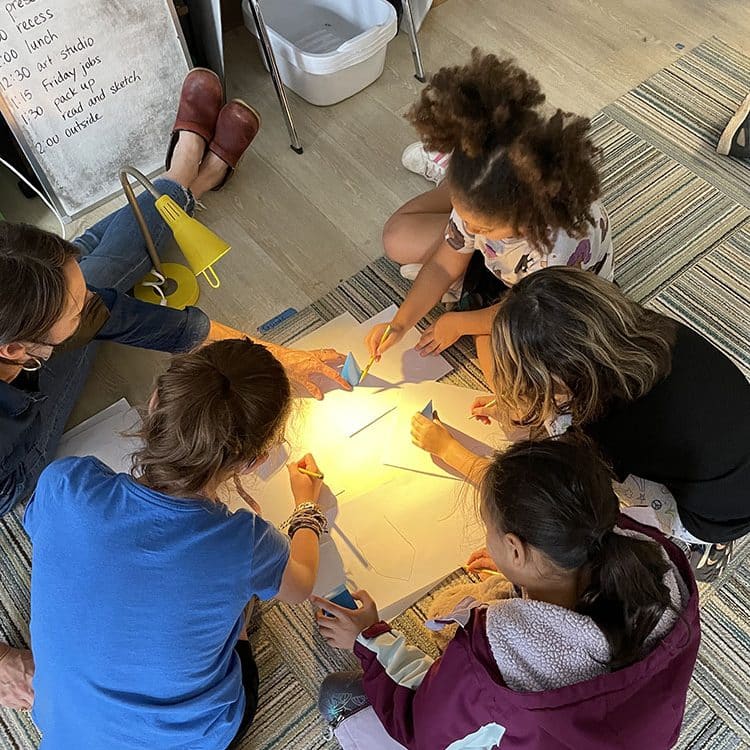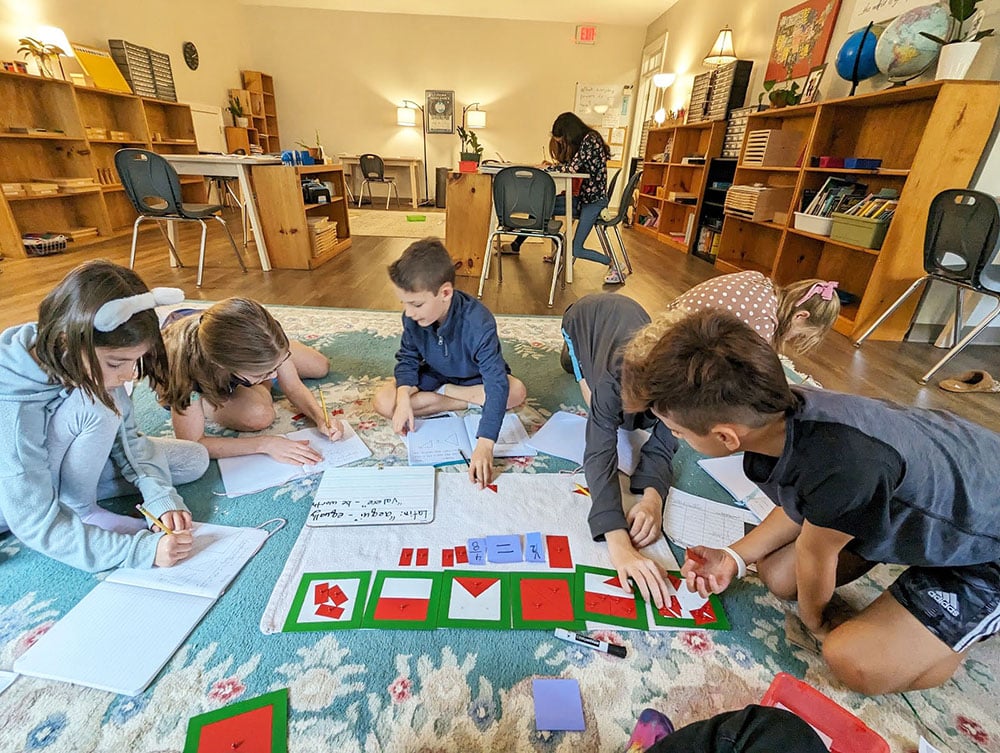Learn A Trio of Teachers At Pinewoods Montessori School
The Community of Children

Created before American public schools chose, in the 1920’s, the Henry Ford factory assembly line as a model (a model which persists in many schools to this day), Montessori schools believe that educational environments should neither feel nor look like factories. Montessori schools are created to look more like a home than an institution, and stress a community based approach to learning.
To achieve this goal the Montessori approach uses a “trio of teachers”. The trio includes the community of children in a mixed-age grouping, the educational environment equipped with hands-on materials, and the adult guide (“teacher”). Each part of this trio is as important as the other.
In Montessori schools the classroom community is structured developmentally, so that children of different ages share the same classroom, and are encouraged to collaborate and help each other.
There is a three year age span providing a diverse group. There are rich opportunities to relate in many different ways. The age differences allow for true spontaneous helping to occur (a cornerstone of a strong society). The group is consistent; everyone comes everyday. The teacher is the same person every day. The child can settle into this community and quickly feel that they are a vital member.
The mixed age community creates conditions that foster individual differences as strengths, and promotes groupings of mixed abilities. These ongoing experiences develop social skills as a response to conditions, rather than through direct teaching intervention. In these groupings children internalize what they have learned by teaching the younger children and by being mentors and role models.
There are also freedoms and limits that are part of living and working in a community. These determine the quality of the social life of our classroom. This daily interaction defines social development in a Montessori classroom, many social opportunities are a key element of the everyday life of the classroom. Social development is so much more than children getting along together! All the children benefit from all the social interchanges.
In this community approach to education the child comes to understand that each one of us is dependent on others and each must make a contribution for the betterment of all. Through living and working daily in a collaborative approach to learning the child finds community membership can be both personally satisfying and socially rewarding.
The Montessori Guide (Teacher)
In the classroom the Montessori teacher is an observer, follower, and guide who brings wisdom, consideration, and experience to the child’s academic, social, and intellectual exploration. This approach demands special professionals confident and skilled enough to allow the child to be an active participant in his or her learning. It also means that all school decisions are driven by what is best for the children.
In this “child-centered” Montessori way, the teacher has an unobtrusive role in classroom activity; the child is the active participant in learning. Teachers focus less on what they do and more on what the student does. By observing the children’s activity teachers are aware of how motivated the student is and how much time and energy the student devotes to the learning process. Instruction, both individual and group, is personalized to each student’s learning style.
The Montessori Learning Environment

The Montessori learning environment is a thoughtfully conceived and painstakingly prepared. The classrooms are refreshingly sensible in their approach to educating children. The learning environment is executed with elegance, simplicity, and good common sense.
First, we create a space that is orderly and child-sized.
Maria Montessori wrote,
“Only practical experience and work lead to maturity…. Those children who have been able to work with their hands make headway in their development, and reach a strength of character which is conspicuous.”
Maria Montessori Tweet this
At the Montessori School we provide specially designed, concrete materials that engage the children constantly in their own learning, allowing each to learn — and to understand — by doing. There is time for process, and the fixing of one’s attention on a key experience that engages a unique concentration and promotes the necessary repetition to imprint the experience within the intellect. In this way knowledge is learned with enthusiasm and guided through hands-on experience. Inspiration and motivation is intrinsic in the educational process.
The fundamental characteristic of the Montessori environment is the prevailing order in the classroom, we create a space that is orderly and child-sized. This order includes a neat and tidy work area, along with proper display of materials, but goes beyond to social conditions and the acceptance of constructive activity as the means for development.
Here, the child feels comfortable. They don’t feel small or out of place. They relate to the room. The order of the room assists them in orienting, in getting to know the physical space. Its consistency means that they can count on finding what they needs. Here, they can establish a secure relationship with the objects in the room. The classroom feels more like a home than an institution.
“We all know the sense of comfort of which we are conscious when a good half of the floor space in a room is unencumbered; this seems to offer us the agreeable possibility of moving about freely.”
Maria Montessori Tweet this

